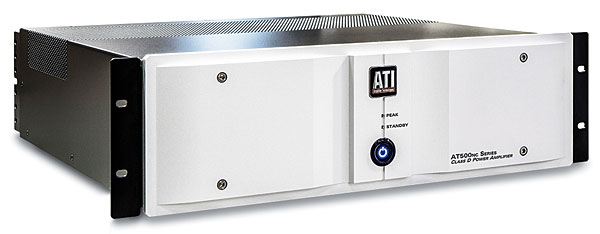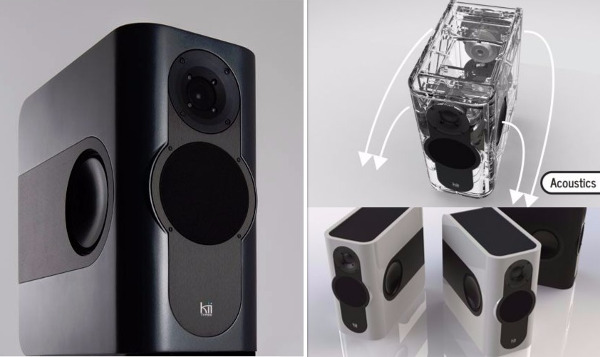Bruno Putzeys: Head of the Class (D, That is) Page 2
This morass of folk lore has slowed down real progress in high-end audio for over a generation now. When it comes to Class D, it bars access completely. You have to love great sound and great music but you have to be equally fanatic about facts. Reality makes logical sense. Anything that doesn’t make logical sense isn’t real.
S&V: Thanks to your work, Class D is coming into its own as an audiophile-caliber amplifier option. What changed?
BP: Mostly the modulator and feedback loop design strategy—the math bit.
I could build an Ncore amp nearly as good as today’s using only parts that were available in the 80’s. But it would be completely impossible with only the knowledge available then. What was missing until recently was a solid understanding of how to make high gain control loops in a limited bandwidth. It’s not too difficult to build a linear amplifier with a bandwidth of 10 MHz. A classical first-order design around one of those would give you 50-something dB in the audio range. It’s no surprise then that designers of linear amplifiers like a wide bandwidth.
A Class D amplifier, by contrast, maxes out at a few hundred kilohertz. Traditionally trained amplifier designers will say that even 20 dB would be hard to get under those circumstances. Until the mid-1990s Class D designers said exactly the same thing. A few knew about second-order control loops but that’s where it mostly ended. They certainly saw the output filter as an insuperable barrier (John Ulrich being the notable exception). It limits the bandwidth down to a few tens of kilohertz so folks felt that taking feedback after the output filter was out of the question.
A high-performance Class D amplifier contradicts every single item of audiophile superstition. Designing one is the ultimate test to see if you’ve got your head screwed on right.
We now know that you can build so-called high-order loops to get a lot more loop gain within a given bandwidth. That was the idea that made sigma-delta AD/DA converters possible. That only really got underway in the 1990s but before that could be adapted to Class D we had to wait for the realization that the output filter could actually be used to leverage this. If you put a third-order feedback loop around an amplifier that includes a second-order output filter, you can make use of that to get a fifth-order loop. All you need to find out is how to keep it stable. That’s been the major contribution of UcD and of NCore: the output filter actually produces about 20 dB of loop gain for free! That goes completely against intuitively held traditions. It often helps not to watch the competition too closely or you end up repeating their mistakes.S&V: Conventional wisdom says a great amplifier has no sonic character of its own and, beyond boosting the signal level, is transparent in the audio chain. But does the nature of high-quality Class D amplification—perhaps through the absence of distortions found in other circuit topologies—produce a particular sonic signature or specific attributes you could describe?
BP: Well, if the amplifier is truly great that’s absolutely right. Sonic signatures are what you get when you approach the same ideal from different angles. There are a few distortion mechanisms conspicuously missing in Class D, mostly those related to the input stage of a Class A(B) solid-state amplifier and nonlinear capacitances. Those are also missing in valve [tube] amplifiers so it’s quite common for people to notice that a Class D amplifier is somehow reminiscent of valve amplification in terms of “sweetness” for want of a better word.
I’ve heard several reports of valve aficionados ditching their glassware and switching to Ncore. All I can conclude from that is that those people clearly weren’t actively seeking the distortion of valves as many believe, but instead had a legitimate beef with certain sonic aspects common to most solid-state designs. That’s one thing I have to explain again and again to my fellow doubters: when audiophiles report a particular listening experience, that experience is real. Trust that. Just don’t trust the explanation they proffer.

S&V: The new generation of Class D amps are obviously good enough to herald audiophile kudos, as we saw most recently with David Vaughn’s review of ATI’s AT527NC and AT524NC amplifiers, but what lingering issues might still need to be resolved to move performance to an even higher level?
BP: I’d say that basically the cat has been skinned. Further refinements will surely happen but the same can be said of the other amplifier classes. In terms of things affecting sound, I don’t see any fundamental outstanding issues that merit much attention—it’s mostly down to lesser implementation details, ordinary technological progress, and perhaps some more adjustments in the math department. I would like to see magnetic materials with less hysteresis though.
S&V: If we assume Class D has achieved full audiophile performance, what opportunities does this open up for future products in categories apart from home audio? Say, portable audio, for instance?
BP: Live sound and studio monitors are fast switching to Class D out of necessity so the easy availability of audiophile-grade prefabbed modules is certainly going to make the world a nicer sounding place. But don’t get your hopes up too high for portable audio. The biggest limiting factor there is distortion in those small loudspeaker drive units. I mean, driver distortion is already a bigger bottleneck than amplifiers in high-end audio (we’re just so used to these types of distortion that we fail to notice them). In portable systems it’s so bad that nothing else matters. In a little Bluetooth speaker, all effort not spent improving driver distortion is wasted outright. By that I mean either using active correction or by making the drivers better in the first place.
S&V: We can’t leave without talking about your work in loudspeakers. Your bio on the Kii Audio site says you have turned your “full attention to loudspeakers with the intention to revolutionize them in the same way as [you] did amplifiers.” Tell us about your work in this area?
BP: Well I guess I’ve already thrown down the gauntlet in my previous answer. Our industry’s fixation on separate components is holding us up. The ultimate goal is sound, acoustical output. If you split the signal chain into separates and you require those to be exchangeable, you’re adding technical requirements to the interfaces between those boxes, just to standardize them. Case in point, why are we making amps with super high damping factors? Because a separate power amp means a passive crossover filter and if you don’t define the source impedance you get unpredictable results. But if you take the system level view and ask, “what problem are we trying to solve,” you can improve the distortion performance of a speaker driver enormously by tailoring the output impedance of the amp that’s driving it. That option isn’t available in a separates world. A system level approach allows you to get clearly better performance at a lower price, or something that is completely unattainable using classical means if you spend a bit more.

We suffer from what I call “loss of perspective.” Compared to amplifiers, speakers distort tremendously. But if you keep the speaker and the room the same you can still do an electronics shootout and clearly hear a difference. So you may be tempted to think: Oh, I really need a new preamp. We fool ourselves into thinking that our sonic horizon is expanded immeasurably because we can just change the preamp for a better one. It isn’t. Separates allow us to tinker at the boundaries of that horizon but only after shrinking it to something the size of our backyard.
Anyhow, that’s why I decided to leave amplifiers for now and do speakers instead. The first aim of Kii is to reduce the impact of the room acoustics. The correct list of items in the playback chain in the order of importance is: Room acoustics, speaker acoustics, drive units, then a long void followed by electronics as a remote third. The Kii design tries to make the speaker and the room switch position by reducing the amount of sound that excites room modes without first going to the listener. To do that at bass frequencies is quite a novelty and that’s where rooms need most help. You can’t build a passive speaker that does that so it’s only natural to make it active. The other benefits of combining electronics and speaker in one product follow naturally.
You didn’t ask why I like philosophy but I guess I made that point.





























































